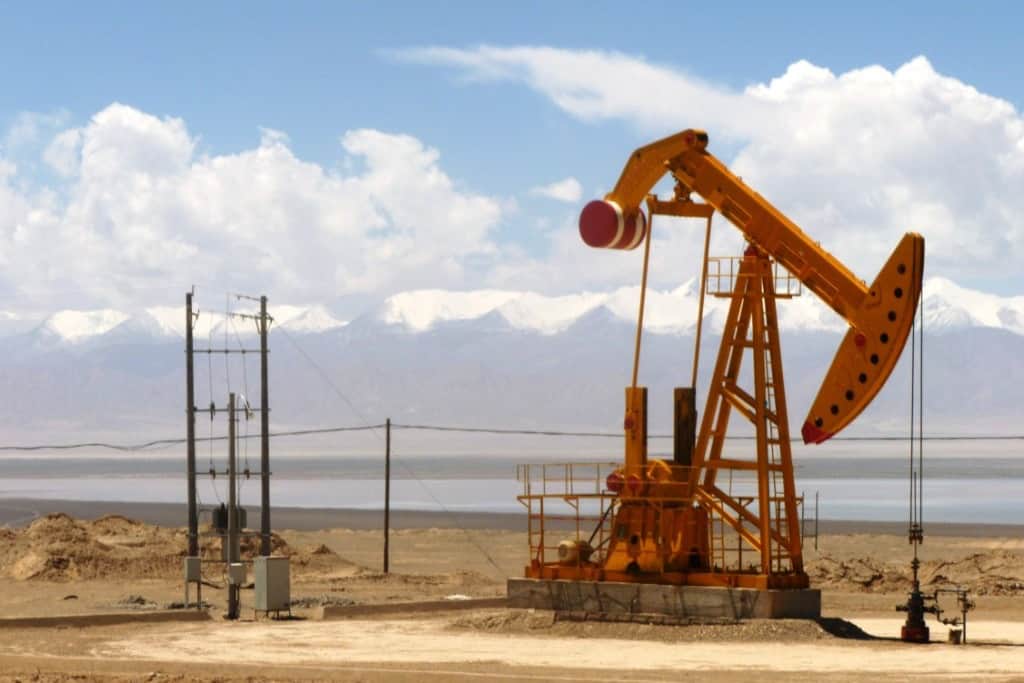
Credit: John Hill, Creative Commons
Over the past few decades, China has steadily and dramatically increased its oil imports as well as is refining capacity. As a result, China is now the world’s largest importer and second largest refiner of oil, helping reshape global energy markets.
This week, we’re looking at how and when China became the world’s top importer of oil, how its suppliers have changed, and which Chinese companies are the most important to the country’s domestic oil industry.
China is the World’s #1 Oil Importer
Two decades ago, China’s imports of oil were generally on par with other populous developing nations like India. But they have grown considerably since then: What the country imported in 1999 is just 11 percent of what the country takes in today. In 2017, China even surpassed the U.S. to become the world’s leading importer. Last year, China imported 11.8 million barrels per day, outpacing the United States, which imports 9.1 million barrels per day, according to data from BP’s Statistical Review of World Energy.
Although China has become the world’s largest crude oil importer, Ellen R. Wald, president of Transversal Consulting and senior fellow at the Atlantic Council, noted that it is not the world’s largest consumer of oil — that distinction still belongs to the United States, which consumes about 20.5 million barrels a day. China, for comparison, consumes 14 million barrels per day.
With oil prices remarkably low in recent years — the price of a barrel has been below $80 when it is typically at $90 to $100 — China has decided to store a portion of what it imports in its national reserves. “They’re storing up because it’s really cheap right now, and they know they need it, and they know that they can use it,” Wald said. “It’s not like it’s going to go bad.”
China snapped up oil at bargain prices in the first part of this year, as demand fell globally due to the Covid-19 crisis, and tankers with purchased oil waited off of China’s shores due to congestion at its ports. Now, Caixin reported last week, the country’s storage space for oil is dwindling.
Where China Gets Its Oil

Saudi Arabia and Russia have been neck-and-neck as China’s top sources of oil in recent years. Russia climbed to the top spot from fourth place just 15 years ago thanks in part to the Eastern Siberia–Pacific Oil (ESPO) Pipeline, which now links Mohe, on the Russian border, with the Chinese city of Daqing, a transfer hub. Also, beginning in 2015, China allowed its independent refineries to import oil on their own accord, and such refineries — with smaller budgets than the state-run entities — often choose to import oil from producers closer to home, such as Russia, to reduce transportation costs.
China’s range of oil sources is an intentional endeavor, says Erica Downs, a fellow at the Center on Global Energy Policy and senior research scholar at Columbia University’s School of International and Public Affairs. “There’s a big effort, a two-decade effort, on the part of China to diversify not just its oil import suppliers but also its oil import routes,” Downs told The Wire. “There’s definitely a view in Beijing and the government’s oil companies that diversity of suppliers and delivery routes is a way to enhance oil supply security.”
Downs emphasized that China has started taking in significant amounts of oil to meet the high demands of its citizens, to make refined products and re-export them around Asia, and to build up its strategic petroleum reserve (SPR).
China has the second largest refining capacity in the world and is responsible for 16.2 percent of the world’s refinery throughput, just after the U.S., which accounts for 20 percent.
One of the reasons China has increased oil imports and refining capacity is to sell to other nations, particularly in Asia. According to Wald, “They’re finding that they’re making money producing products and selling it to Asia, in other parts of Asia, so it makes sense to buy, store, refine, sell.”
China also extracts oil within its own borders. According to BP, China’s domestic production of crude oil was 3.836 million barrels a day in 2019 — not insignificant, but still well behind the U.S.’s 17.045 or Saudi Arabia’s 11.832 — putting China in 7th place worldwide for production.
Unlike its imports, China’s domestic production of crude oil has risen only slightly over the past 20 years: in 2000, it was 3.257 million barrels a day.
Bloomberg reported last year that China’s big oil companies increased capital expenditures to $77 billion — up 18 percent from the previous year — to try to boost domestic oil exploration and production following calls from President Xi Jinping to increase national energy security amidst the escalating U.S.-China trade war.
China’s Biggest Oil Companies
China’s state-owned oil companies are among the world’s largest companies, with several ranking among the Global Fortune 500 by revenue, ahead of more widely recognized tech and ecommerce giants like Apple and Amazon.
Some, like Sinopec and CNPC, are multi-faceted conglomerates with operations spanning most of the oil supply chain from extraction and production to development and resale. Others like CNOOC, by contrast, were founded in order to develop China’s capabilities in specific areas of the oil industry, such as holding exclusive responsibility and juridical powers over state cooperation with foreign enterprises.

State-owned China Petrochemical (Sinopec) is China’s largest oil company, and is listed on the Hong Kong, Shanghai and New York stock exchanges. It is also one of the highest earning companies in the world, ranking #2 in the Fortune Global 500 list in 2019, just behind Walmart. McKinsey ranked it #1 among the world’s refining companies based on the number of refineries. And according to the company’s website, it has the second largest number of gas stations in the world.

China National Petroleum Corporation (CNPC) is one of the world’s largest oil companies, and also among its highest earning. Along with Sinopec, it ranked among the world’s top five largest companies by revenue in 2019. CNPC’s listed arm, PetroChina, trades on the Shanghai, Hong Kong, and New York stock exchanges.

Headquartered in Beijing, China National Offshore Oil Corporation (CNOOC) is one of China’s largest oil companies, and its largest producer of offshore crude oil and natural gas. Founded under a PRC regulation on the exploitation of offshore petroleum resources in 1982, CNOOC was created expressly for the purpose of cooperation with foreign companies. Over the past decade, CNOOC has signed strategic agreements with several other nations’ largest oil firms, including American partners Chevron and Shell.

Founded at the turn of the 20th century, state-owned Shaanxi Yanchang Petroleum is one of China’s largest and oldest oil companies, and the country’s first domestic oil producer. Its subsidiaries are listed in Hong Kong and Shenzhen.

One of the first Chinese companies to make it onto the Fortune Global 500, Sinochem is not only big in the petrochemical business, but also China’s largest producer of fertilizers and other agricultural chemicals. Sinochem planned a Hong Kong IPO for its energy unit in 2018, but shelved it after finding it would likely raise only $1.2-1.3 billion of the $2 billion expected.

Emma Bingham is a Boston-based editor for The Wire. Previously, she was editor in chief of The Tech at the Massachusetts Institute of Technology. @emmapbingham

Kara Greenberg is an editor at The Wire. @karagreenberg_

Hannah Reale is an intern with The Wire. Previously, she reported for the New England Center for Investigative Reporting, The West Side Rag, and her college newspaper, The Wesleyan Argus. @hannahereale





